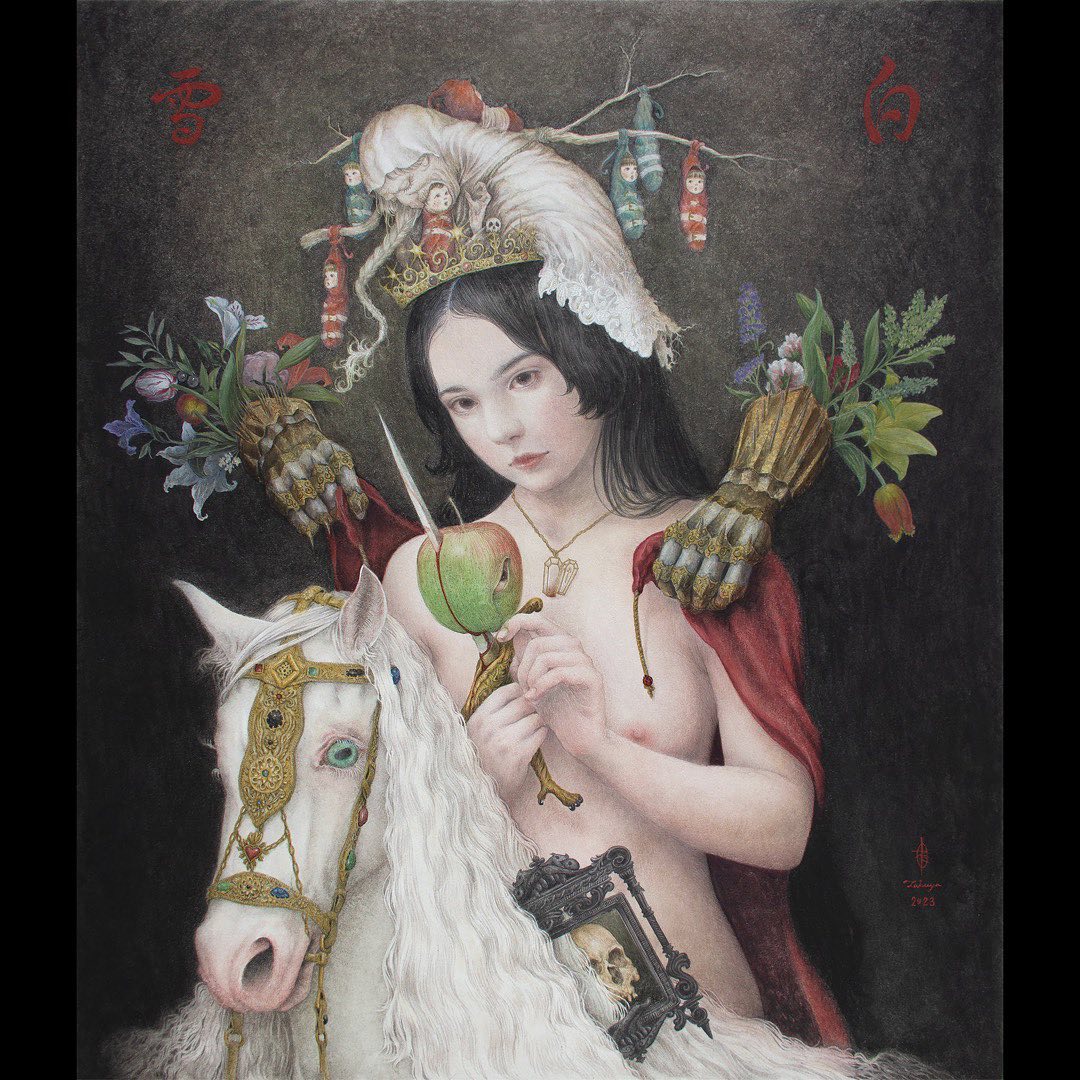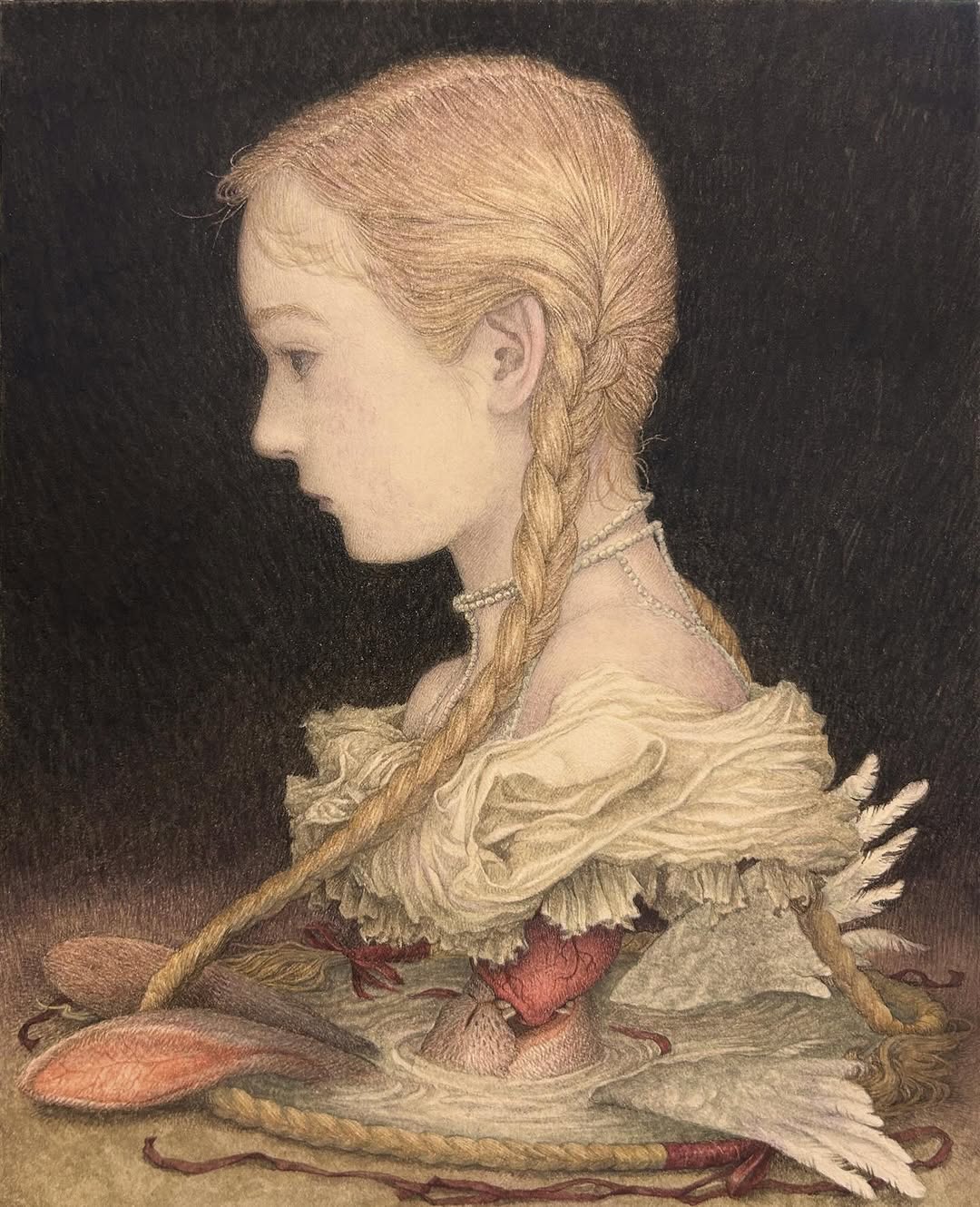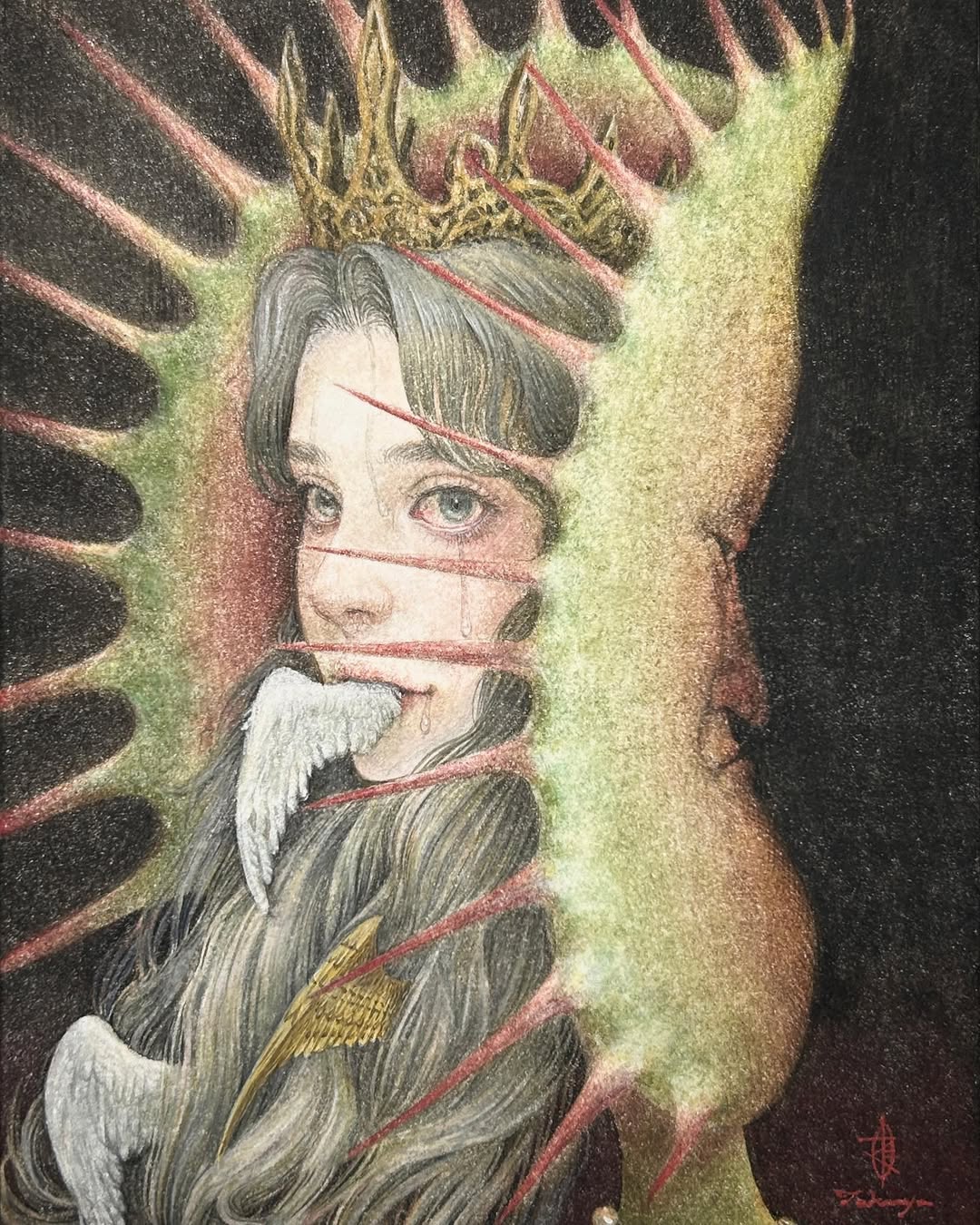b
Tender Chimera: The Art of Takuya Mitani
Takuya Mitani creates delicate, detailed paintings portraying mysterious youths in a chimerical state. Accompanied by a myriad of strange creatures, flowers, emblematic objects such as Eden-like apples, mystical and heraldic imagery, they seem surreally transforming, or merging into their noble and enigmatic accoutrements. These symbols and articles revolve around and halo the lovely, tranquil beings whose very placidity seems to belie sinister interior layers. There are birds and rabbits and horses, as well as chimerae with their fantastical hybrid forms, and the subjects, too, seem chimerical, always transfigured, metamorphosing, or, as it were, marred by a grotesque yet ethereal blending with other elements in the images. There is also a motif of angels, with arched wings indicating a strange divinity for these tender youthful beings. Meticulously drawn, complexly composed, rendered with an eye to detail and a careful realism, Mitani’s paintings with their almost pretty air are provoking and lulling, combining an intriguing, soft, otherworldly aspect with historical and surrealistic elements.


